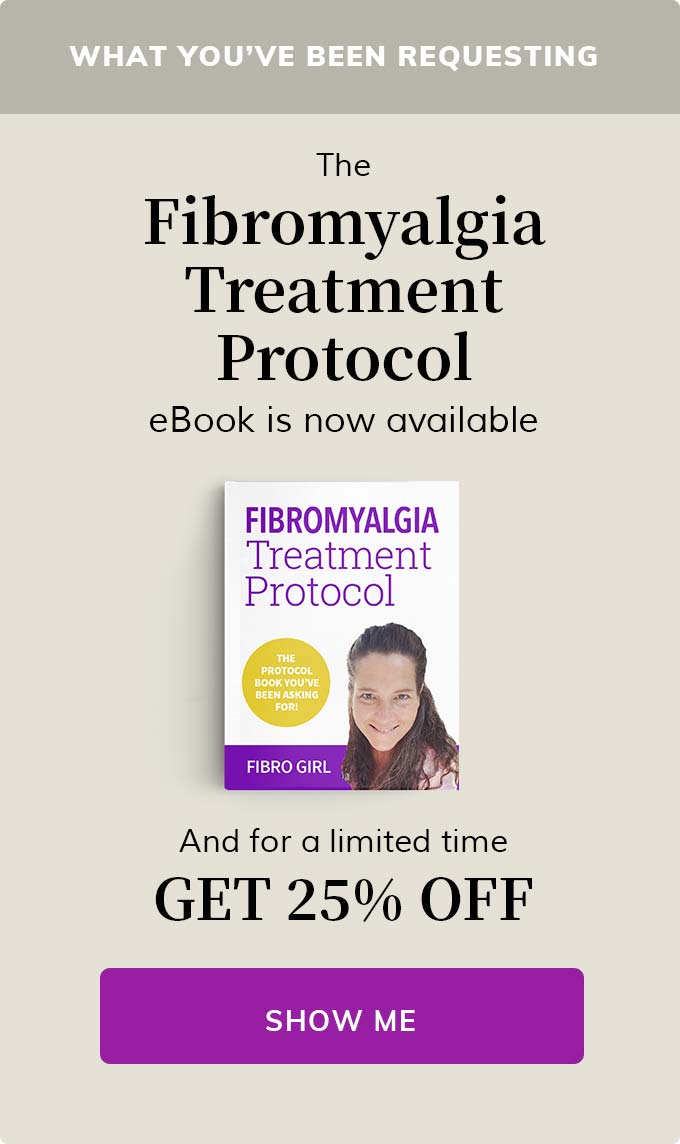Finding Relief from Fibromyalgia
Muscle Spasms

I sure do know the pain of muscle spasms. At one time, I even had full body muscle spasms, and it left me in bed, unable to move. Not everyone will experience severe spasms, but when we have fibromyalgia, it is just ONE more symptom we need to address.
And, while you may not be able to prevent fibromyalgia muscle spasms all together, you can learn to recognize them and minimize their occurrence.
Recognizing Fibromyalgia
Muscle Spasms
It’s important to differentiate between muscle spasms, twitches, and cramps.
A cramp occurs when a muscle contracts and doesn’t relax, producing consistent pain that can last for short or long periods of time.
A twitch occurs when a single fiber or small portion of a muscle contracts repeatedly, producing a fluttering sensation that is felt and sometimes seen under the skin. In most cases, twitches are more annoying than painful.
Muscle spasms occur when an entire muscle contracts and releases repeatedly. It shares elements of cramping and twitching but is entirely different. For many fibromyalgia patients, these spasms occur at unpredictable moments and can strike any muscle in the body without an obvious cause.
They often produce a significant amount of pain and may impact a large area of the body, including the legs and the back. This is one way of differentiating them from twitches that impact smaller areas of the body.
Perhaps the most devastating fibromyalgia muscle spasms are those that impact muscles in the neck. This often leads to intense headaches that characteristically impact only one side of the head, although the pain can radiate around the entire head and into the face.
The pain may extend down to the upper back, and some people experience nausea as the spasms continue. These symptoms of fibromyalgia will often interrupt daily life, leading to complications at work and inconveniences in your home life. (Learn more about fibromyalgia headaches article here.)
The other common area for fibromyalgia muscle spasms is around the leg muscles from the long sartorius muscle in the upper leg to the calves and even into the ankles and feet. This is one area where I often caution people about stretching first thing in the morning.
You see, the body is less hydrated, less flexible and more prone to early morning spasms. It might also happen that you cannot control the urge to stretch, and you find your muscles going into spasm without you even knowing, that is until the extreme pain occurs!!
As much as we don't want to be depleted of magnesium and other minerals, taking too much is also not a good idea. A good additive free multi vitamin and occasionally an additional 100-200mg, sometimes spaced out is most beneficial, especially if you have irritable bowel symptoms. Some people need to go very slowly when adding additional magnesium
The unintended morning stretch
So what happens when you wake in the middle of the night OR first thing in the morning, and some vulnerable part of your body is trying to "stretch you into a spasm?"
That can be the hardest muscle spasm to manage because you are not fully engaged in your body yet.
As I describe below, there are a few things you can do for support, even if the cause is fibro itself.
Checking for Magnesium Deficiency
Here in this article, I detail how to check for a magnesium deficiency and some of the various forms of magnesium you can experiment with. Magnesium for Fibromyalgia.
Taking magnesium is not a one size fits all. You will have to experiment. We recommend and use a very safe multi vitamin to start with, and then micro dose as needed during the day. After lunch is a great place to start. You are better off to take additional magnesium with a meal.
However, as you often hear me say, it is a good idea to avoid depleting magnesium in the first place. Medications, diuretics, and certain forms of dieting can deplete magnesium.
Can You Prevent Fibromyalgia Muscle Spasms?

So we know that fibromyalgia can present with many different symptoms. Yet, we also know that there are some variables that we need to address when it comes to prevention of muscle spasms in any area of the body.
Lifestyle, stress control, movement tailored to fibromyalgia, and properly assimilating our minerals.
It's not just about mineral intake but absorption as well. Not everyone tolerates various forms of oral magnesium, so it is best to experiment and use topical forms of magnesium OR a combination to find what works best for you.
(see link to magnesium article above and below)
The muscles can also start contracting due to inadequate blood flow. This is one reason that we recommend all of us with fibromyalgia get some form of safe and effective exercise in regularly. I get it, I am here to support you in this.
This is a great way to keep your blood circulating efficiently, but it can also help with fatigue, depression, and many other symptoms of fibromyalgia.
You may not be able to prevent muscle spasms all together, but building muscle tone, stretching gently, and keeping your body in good condition through cardio exercise will at least ensure that your muscles have a better fighting chance to avoid spasms and even trigger point pain.
If you do still experience muscle spasms, there are other treatment options to help you get over the pain and discomfort. Follow me on the fitness page, Fibro Fit People for ongoing suggestions and support.
Fibromyalgia Muscle Spasms Treatment Options
Pain
medication isn’t the first course of treatment recommended for muscle spasms. Immediate treatments often include relaxing in a warm bath to
soothe the muscles (add magnesium salts, regular salt and even a small
amount of ginger powder to the bath) Yes, regular salt will help to balance the minerals needed for the adrenal glands.
If you get massage therapy, be sure
to tell your massage practitioner that you’re experiencing muscle
spasms so that they don’t apply too much pressure and make the situation
worse.
You may want to see a physical therapist to learn
stretching techniques that are effective at relieving spasms quickly or follow me on the fitness page noted above.
You may learn how to massage the spasm yourself, eliminating the
need to rush off to a professional. Fibromyalgia muscle spasms can be
equal opportunity, meaning they can occur anywhere on the body. If you have nerve pain, you may notice they occur more often when nerve pain is heightened.
What is good for your adrenals can also be good for your muscles :
A few drops of Concentrace liquid minerals in your water bottle during the day can also be very helpful to be sure you are getting adequate, easy to absorb minerals in their purest form. Learn more here about Concentrace in the Adrenal Stress article.
If
your muscle spasms produce extreme pain, last for long periods of time,
or occur continually, you may need to consider any of the above
options. If dehydration or lack of mineral absorption becomes an issue,
be sure that you are not experiencing a side effect from a medication
you might be taking.
We also find that trigger points which can occur just about anywhere on the body, can also be related to muscle spasms. What happens when a trigger point plays havoc in your muscle? Well, it makes the muscle unable to properly activate, causing more pain and stiffness, potentially leading to muscle spasms.
Stretching with fibromyalgia is just a little different. I like to go very slowly and hold BEFORE getting to the point of complete stretch. Be extra careful when stretching the hamstrings or any part of the back legs or calves.
Related Articles:
- Effective Forms of Magnesium for Fibromyalgia
- Fibromyalgia Symptoms
Fibromyalgia Trigger Points related to muscle spasms
Chronic Muscle Pain in Fibromyalgia
Before you leave, my sitemap can provide you with a "God's-eye" view of this website laid out in "outline format".
Stay connected by joining our unique Email here at Fibro Repair Email
Home > Fibromyalgia Symptoms > Fibromyalgia Muscle Spasms
Didn't find what you were looking for? Search for it:
living-smarter-with-fibromyalgia.com
©2013-2024 All Rights Reserved
FibroFitPeople, LLC ;©2024 All Rights Reserved









